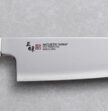Your Guide to Better Shots: Why Every Hunter Needs a Range Finder
Contents
You’ve spotted a buck, and you are sure it’s 200 yards away. Or is it 250? Guessing the distance in the field is likely to result in a missed shot. That’s exactly why serious hunters use a range finder. This essential gear takes away the guesswork out of distance estimation and makes the difference between a clean and ethical kill and a wounded animal that gets away.
What Is a Range Finder?

source: cloudynights.com
A range finder is basically a laser-powered distance measurer that tells you exactly how far away your target is. It works by sending an invisible laser beam that bounces off your target and back to the device, then calculates the time of this round trip and converts it into a distance measurement. You point it at something, press a button, and seconds later, you have a precise distance reading. It’s roughly the same principle used in everything from military equipment to golf range finders. Most modern hunting range finders will accurately measure distances from 10 yards to 1,000 yards or more, depending on the model and conditions.
What Are the Different Types of Rangefinders?

source: nordicprecision.is
Monocular: The Popular Choice
The monocular models are some of the most common and probably what people typically picture when they think of a hunting range finder. These are small, handheld devices that look very much like a little telescope, designed to be light and portable. You hold them against one eye, centre your target, and read your distance.
Their biggest advantages are their portability and simplicity. They can fit in a pocket or on your belt, and most of them don’t weigh more than a few hundred grams. They usually offer magnification from 4x to 8x, which gives you a better view of your target when ranging it. Some have additional features like angle compensation, which adjusts the distance read based on whether you’re shooting uphill or downhill – something that’s critical for accurate long-range shooting. Popular models like the Vortex Ranger line or Leica Rangemaster offer excellent performance even in adverse weather conditions.
Binocular: Double the View
Binocular rangefinders combine the functionality of standard hunting binoculars with added laser ranging capability. Instead of two distinct pieces of equipment, you have both in one. This is especially enticing for hunters who spend long periods glassing for animals.
The main benefit here is convenience – you can scope the ground with both eyes (which feels more natural and less fatiguing), find your target, and range it in an instant without having to switch back and forth between two devices. This can be a big time-saver, especially when dealing with fast-moving game or when you need to act quickly.
These units are usually more expensive than monoculars, but quality models offer impressive features, like excellent light transmission, colour reproduction, close and sharp focus, as well as true range calculation. They can be heavier and bulkier, which may be an issue for hunters who prioritise lightweight equipment, but if you’re already bringing binoculars anyway, the weight consideration isn’t as enormous as you might think.
Rifle-Mounted: Precision at Your Fingertips
Rifle-mounted rangefinders are the most up-to-date technology used for hunting. These ranges integrate with your rifle scope or mount beside it, meaning you can range your targets without moving your eye from the scope or taking your hands from the shooting position.
Some are integrated with smart scopes that automatically correct for distance, wind, and other factors. Others display the range data in your field of view and allow you to perform the ballistic calculation yourself. Either way, they save you time and the movement required for employing a stand-alone ranging device.
The downside? Higher cost and complexity. These devices can reach a few thousand dollars, and they require more setup and maintenance than stand-alone units. They’re also typically used by precision long-range competitors rather than general-purpose hunters.
Why Every Hunter Should Own One

source: scopedout.com.au
Here’s the thing – responsible hunting is all about clean and quick kills. A range finder eliminates one of the biggest variables in shooting accuracy: estimating how far away your target is. When you know the exact distance, you can properly compensate for your aim and place your shot where it needs to go.
Beyond ethics, there’s the simple fact of not wasting meat or losing injured animals. An errant shot made because you misjudged the distance can spoil meat or worse, leave an injured animal to suffer and possibly die somewhere you will never be able to find it. Range finders prevent these situations by providing you with the data you need to make accurate shots.
They’re also fantastic for scouting and planning. You can range landmarks, shooting lanes, and potential stand locations during the off-season. All this prep is worth it when the hunting season starts and you need to make quick decisions.
Lastly, range finders make you a better hunter overall. When you always have your shooting distances in mind, you will start to develop a better natural sense of range estimation. You will also be more familiar with the ballistics of your rifle at different ranges, thereby becoming more effective even when you can’t use the range finder.
The Bottom Line
Regardless of whether you choose a simple monocular, a convenient binocular, or an advanced rifle-mounted version, this device is one of those hunting essentials you’ll find yourself grabbing for again and again. Start with a simple monocular if you are tight on cash – even a budget-friendly version will dramatically improve your marksmanship and hunting success, and then you can move on to more high-tech ones.






